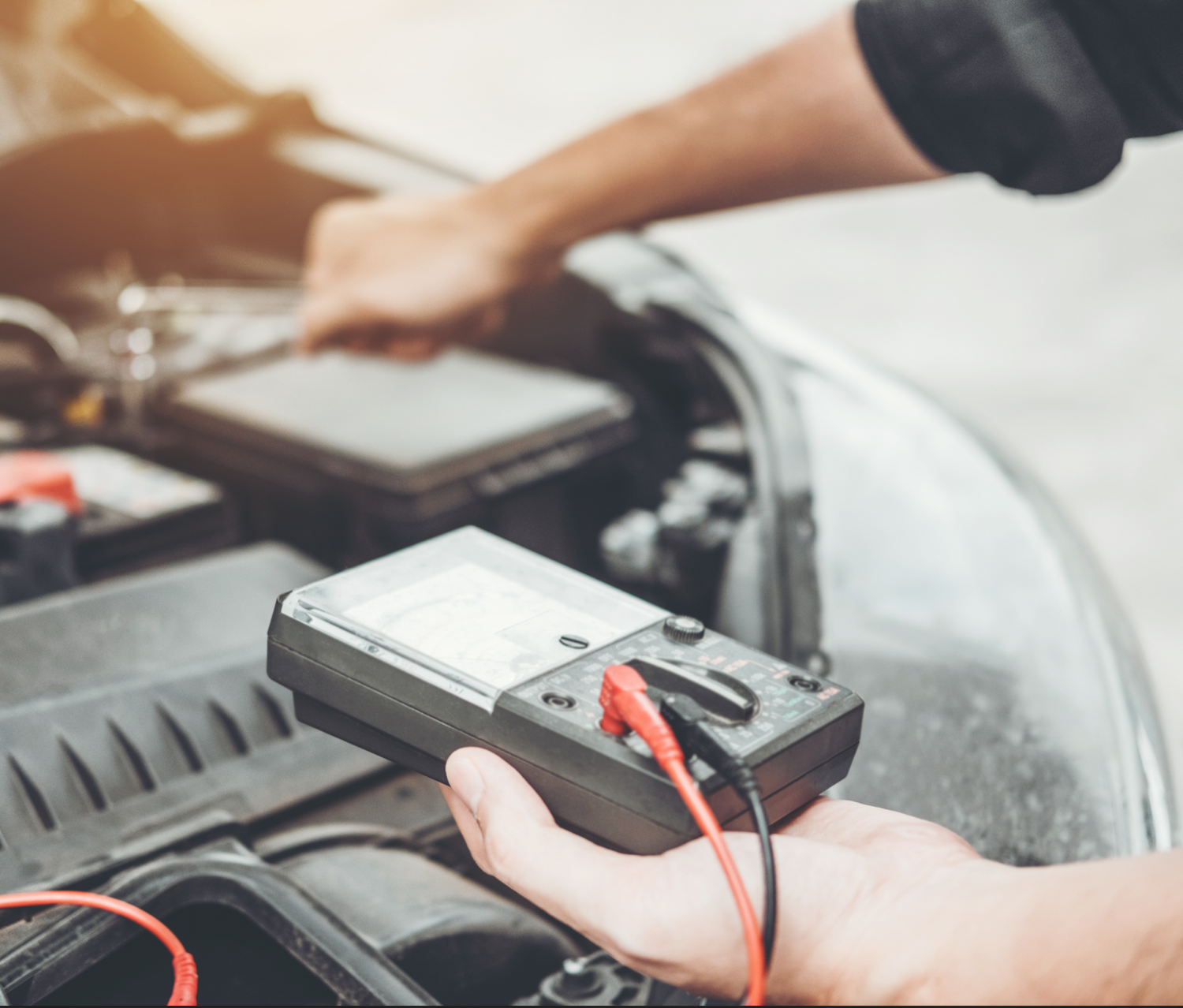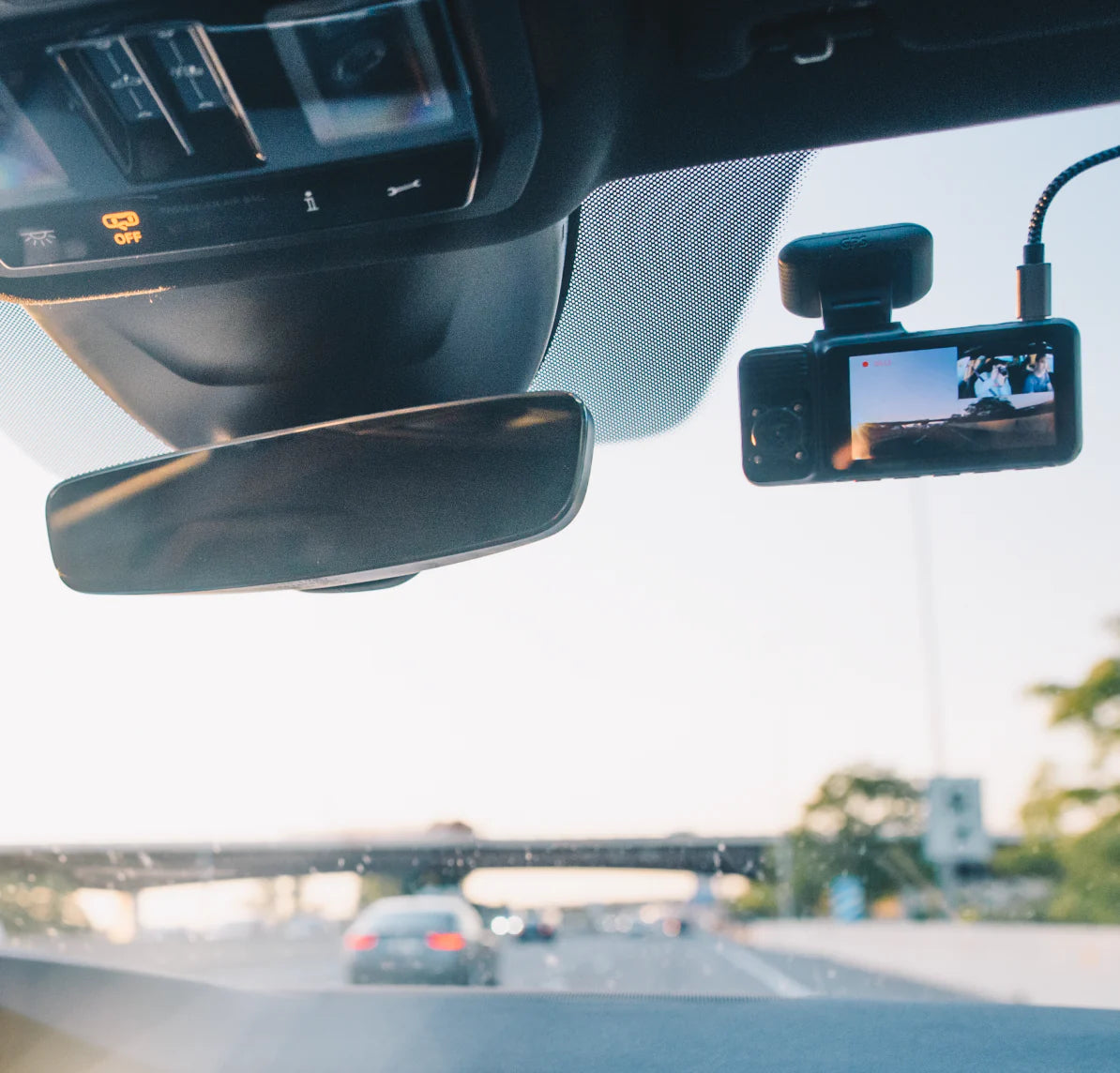Inside this Article:
- What is the Car Charger Powered Dash Cam?
- Difference Between Battery Powered and Car Charger Powered Dash Cam
- How Does the Car Battery Work
- How Can I Keep Dash Cam Monitoring During Parking Without Draining My Car's Battery?
- How to Choose the Right Installation Method for Yourself?
- What Voltage Does a Dash Cam Use?
- FAQ: Vehicle Batteries and Dash Cams
- 1. Can a dash cam drain my car battery if left plugged in overnight?
- 2. How can I prevent my dash cam from draining my car battery?
- 3. What is the difference between a car charger and a hardwire kit for powering a dash cam?
- 4. How do I know if my car’s cigarette lighter socket is always on?
- 5. Can I use a dash cam with my hybrid or electric vehicle (EV)?
As dash cams become more essential for vehicle security and recording incidents on the road, many drivers are concerned about the impact on their car’s battery.
Specifically, the question arises: "Will a car dash cam drain my car's battery?" This blog delves into the details of dash cams, their power sources, and how to manage their impact on your vehicle’s battery.
What is the Car Charger Powered Dash Cam?
A car charger powered dash cam is a recording device installed in vehicles to capture video footage of the road and surroundings while driving. These dash cams are typically plugged into the car’s cigarette lighter socket or auxiliary power outlet.
This power source is convenient because it is readily available in most vehicles, and it allows the dash cam to operate continuously while the car is running. In addition, the installation is also very simple, just plug it in and it can running normally.
If you think wiring is troublesome, you can even hide those excess cables directly into the passenger seat or floor mat.
Difference Between Battery Powered and Car Charger Powered Dash Cam
Battery-powered dash cams have built-in batteries that need periodic recharging, typically via USB or a dedicated charger. They are portable and can operate independently of the car’s electrical system for a limited time. For most rechargeable dash cams, their running time is usually around 3-24 hours.
This may not meet the needs of certain professional clients well, such as truck and taxi drivers who spend long hours on the road. Imagine they need to remove and charge the dash cam after three hours or every day, which is undoubtedly troublesome.
On the other hand, car charger powered dash cams draw power directly from the vehicle’s battery through the cigarette lighter socket. This setup provides a consistent power supply, ideal for long drives.
However, if the car’s cigarette lighter remains active when the engine is off, it could potentially drain the car’s battery if the dash cam continues to run.
Because cigarette lighters usually do not have low voltage protection function, if the cigarette lighter still get power after the engine is turned off, the dash cam will continue to work until the battery runs out of power.
How Does the Car Battery Work
Understanding how a car battery works is crucial for managing its consumption and ensuring it doesn't drain unnecessarily.
A car battery is essentially a rechargeable battery that supplies electrical power to a vehicle. It stores energy in chemical form and converts it to electrical energy to power various components of the car.
Key Functions of a Car Battery
- Starting the Engine: The primary role of the car battery is to provide the power necessary to start the engine. When you turn the ignition key, the battery sends a high-voltage current to the starter motor, which then cranks the engine.
- Powering Electrical Components: Once the engine is running, the battery supplies power to all electrical components in the car, such as lights, radio, and infotainment systems.
- Stabilizing Voltage: The battery also acts as a voltage stabilizer. It ensures that the voltage remains constant and protects the vehicle’s electrical components from voltage spikes.
Battery Maintenance Tips
- Regular Inspection: Check for corrosion on battery terminals and clean them if necessary.
- Voltage Check: Use a multimeter to regularly check the battery voltage. A healthy car battery should read around 12 or 24 volts when fully charged.
- Alternator Check: Ensure your alternator is functioning correctly, as it recharges the battery while the engine is running.
- Avoid Short Trips: If you haven't started your car for a long time, short trips can prevent the battery from fully recharging. Try to combine errands into longer trips to allow the alternator to recharge the battery fully.
How Can I Keep Dash Cam Monitoring During Parking Without Draining My Car's Battery?
To keep your dash cam monitoring during parking, you can use a hardwire kit to connect your dash cam. Hardwiring connects the dash cam directly to the car’s fuse box, typically using a kit that includes a Low voltage protection feature.
This feature prevents the dash cam from draining the battery by cutting off power if the battery voltage drops below a certain level like 11.6V.
Connect dash cam with hardwire kit so that your dash cam can continue recording while parking. If a hit and run or theft occurs, you can easily obtain a video as evidence in the dash cam.
Another option is to use an external battery pack specifically designed for dash cams. These batteries can provide power for several hours without relying on the car’s battery.
How to Choose the Right Installation Method for Yourself?
Choosing the right installation method for your dash cam is essential for optimal performance and battery management. Here are the steps to help you decide:
Step-by-Step Guide
-
Identify Your Needs:
- Continuous Monitoring: If you need the dash cam to monitor when parked, consider a hardwire kit.
- Simple Setup: If you prefer a quick and easy installation, a car charger might be more suitable.
-
Evaluate Your Technical Comfort Level:
- Basic Skills: If you’re comfortable with basic car electronics, you might handle a hardwire kit installation yourself.
- Professional Installation: If not sure how to install a hardwire kit, opt for professional installation to ensure safety and proper setup.
-
Research Hardwire Kits:
- Look for kits with a Low voltage protection feature to prevent battery drain.
- Read reviews and choose a reputable brand.
-
Gather Necessary Tools:
- For hardwiring, you’ll need tools like a fuse tap, and a multimeter.
- Ensure you have the correct fuse type for your vehicle.
-
Follow Installation Instructions:
- Carefully follow the instructions provided with the hardwire kit.
- Ensure all connections are secure and test the setup before finalizing.
-
Monitor Battery Health:
- Regularly check your car battery’s health, especially after installing a dash cam.
- Use a voltage meter to ensure the battery is not being drained excessively.
What Voltage Does a Dash Cam Use?
Dash cams typically operate on 5 volts (V), but they are powered through the car’s 12V system. Here's a breakdown of how this works:
Voltage Conversion
- Step-Down Converter: Dash cams include a step-down converter that reduces the 12V from the car’s electrical system to the 5V required by the dash cam. This converter is usually built into the car charger or the hardwire kit.
- Power Supply Stability: The converter ensures a stable 5V supply, crucial for the dash cam’s continuous and reliable operation.
Power Consumption
- Typical Usage: Dash cams with 4K resolution generally consume 10 watts (W), translating to about 2 amps (A) at 5V.
- Impact on Battery: The power consumption of a 4K dash cam is relatively high, continuous operation, especially when the vehicle is off, can eventually drain the car battery.
FAQ: Vehicle Batteries and Dash Cams
1. Can a dash cam drain my car battery if left plugged in overnight?
Yes, a dash cam can drain your car battery if left plugged in overnight, especially if the cigarette lighter socket remains powered when the engine is off. To prevent this, use a hardwire kit with a voltage cutoff feature or unplug the dash cam when not in use.
2. How can I prevent my dash cam from draining my car battery?
To prevent your dash cam from draining your car battery, consider using a hardwire kit with a voltage monitor that cuts off power when battery voltage drops too low. Alternatively, use an external battery pack designed for dash cams.
3. What is the difference between a car charger and a hardwire kit for powering a dash cam?
A car charger plugs into the vehicle’s cigarette lighter socket and is easy to install but may continue to draw power when the engine is off in some model of vehicles. A hardwire kit connects directly to the car’s fuse box, providing a more permanent solution with features like voltage cutoff to protect the battery.
4. How do I know if my car’s cigarette lighter socket is always on?
To check if your car’s cigarette lighter socket is always on, plug in a device like a phone charger and see if it can be charged when you turn off the engine. If it does, the socket remains powered even when the car is off.
5. Can I use a dash cam with my hybrid or electric vehicle (EV)?
Yes, you can use a dash cam with a hybrid or electric vehicle. Ensure you use a hardwire kit compatible with your vehicle’s electrical system and consider the impact on battery usage, especially in EVs with smaller auxiliary batteries.




Leave a comment
All comments are moderated before being published.
This site is protected by hCaptcha and the hCaptcha Privacy Policy and Terms of Service apply.